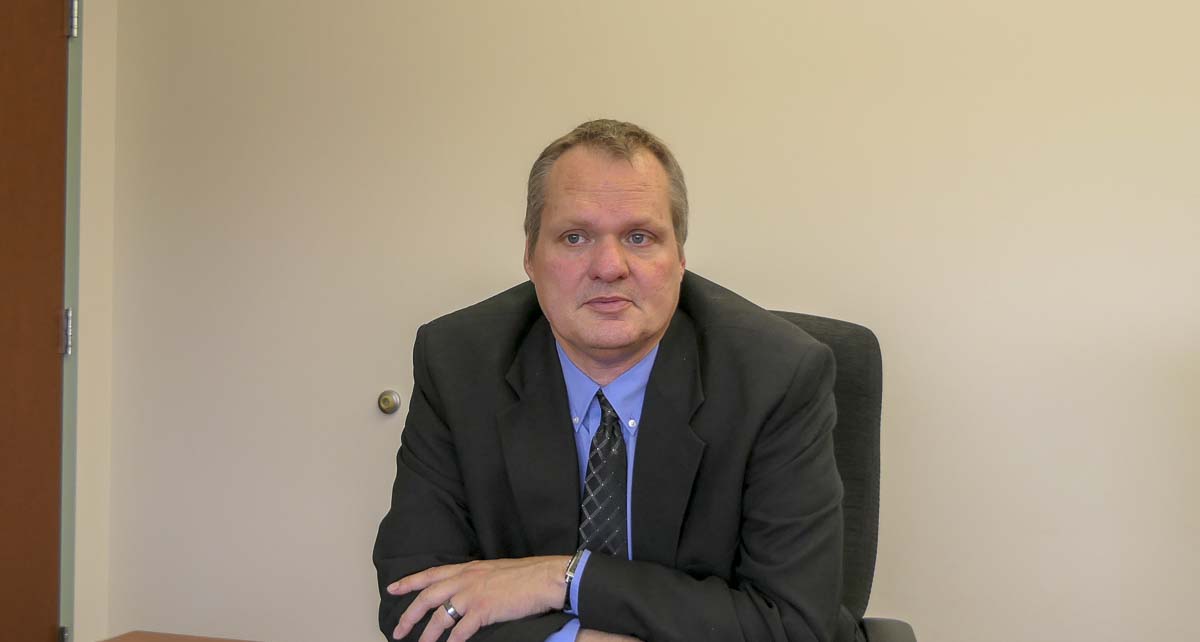Shawn Henessee says rising costs are offsetting revenue, making budgeting difficult
CLARK COUNTY — Now in his second full year, Clark County Manager Shawn Henessee feels like he finally has a full grasp of the budget issues facing the county.

“We are faced with trying to balance the challenges of an increase in demand for county services due population growth with providing the high quality services our community deserves,” said Henessee in a recent press release announcing his recommended 2020 budget.
That $545.27 million budget, which the full County Council will take up during two days of public hearings on Mon., Nov. 25 and Tue., Nov. 26, tackles difficult issues such as software and cybersecurity needs, critical law and justice safety needs, infrastructure upkeep and replacement, and maintaining service levels while meeting increased workload demands.
During an interview with Clark County Today last September, Henessee outlined some of the unique challenges of the county’s budgetary situation.
“We really have three legs to our revenue side,” Henessee says, “and that is our property tax, our sales tax, and the third leg is what I call other revenue, which is grants fees and kind of the catch-all of every other thing that’s revenue.”
Property taxes and other revenues generate approximately $60 million each, says Henessee, with sales taxes bringing in around $45 million.
“Ideally, in a county this size, the sales tax would be right at about $60 million,” he says, “but that entity across the river really drains our sales tax because we do lose a lot that goes over there.”
Henessee is referring, of course, to Clark County’s proximity to Portland, Oregon, with no sales taxes, drawing thousands of people to brave traffic and cross the river to make their big ticket purchases.
“We’re the largest border county, city anywhere that faces this kind of impact,” says Henessee. “Spokane has Coeur d’Alene, but it’s 45 minutes away, and it’s three percent versus eight percent or whatever. So it’s not the same thing.”
Despite that issue, sales tax revenues have increased by double-digit percentages for the past few years. While that has slowed down, Henessee says the increase has allowed them to stave off talk of major cuts to county services. There is little margin for error, however, should another economic downturn arrive in the near future.
Economic boom: good and bad news
Henessee says the same economic boom that has led to rapid growth in the county has brought in more revenue, but it has also dramatically increased the cost of doing business.
“The example I use is the roof on the courthouse,” he says. “In three years, it quadrupled in price to be replaced, because what you see is, particularly in the construction side, they have so much work that some of the bids that come back, they just throw out a really high number. And, well, if they don’t accept that I’ve got six more I can go do, and if they do accept it, then great, we’ll do it and we’ll take that 300 percent profit margin.”
The other factor is personnel costs. Henessee notes that, out of the $170 million in the county’s general fund budget, $100 million is for personnel costs alone.
“So in the end, you’re in a situation where you’re behind before you even start,” Henessee says, “because that hundred million dollars is going up by 3.5 percent, at least, whereas the most stable and the strongest leg of your revenue side is going up by 2.2 percent.”
Since 2009, the number of county employees has declined from 1,125 in 2009 to around 1,067 this year. In that same time period, the budget for salaries and benefits has ballooned from $90.4 million to $111 million this year.
Henessee’s proposed 2020 budget is $27 million higher than last year, thanks largely to continuing increases in sales tax revenue and new construction. It assumes the council will vote to take the allowed 1 percent increase on property tax levies, along with another .979 percent in banked capacity from forgoing the increase in previous years. If accepted, those increases would bring in an anticipated $1.26 million to the general fund.
Henessee’s budget would set aside $700,000 for a multi-campus space planning project for county buildings. This study would include law and justice services such as the county jail, which could cost well in excess of $300 million. Henessee has even said he would be open to selling county properties such as the Public Service Center and then leasing back space if it could help balance the budget.
“It’s not just saying ‘I don’t want to look at this,’ or ‘I don’t want to look at that,’ because some people say ‘I don’t ever want to look at even taking the 1 percent,’” says Henessee, “and others say ‘I don’t ever want to look at eliminating services, because they’re all important.’ And it’s like, you got to look at this from a collective perspective. I usually avoid like the plague using the term ‘holistic,’ but that is something that you’ve got to do. Because if you’re just going to take one aspect of this off the table, it’s going to make it extremely difficult to address this systematic budget issue for the general fund.”
The complete 2020 recommended budget can be found on the county’s website at https://www.clark.wa.gov/budget/2020-budget.




